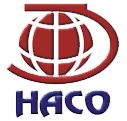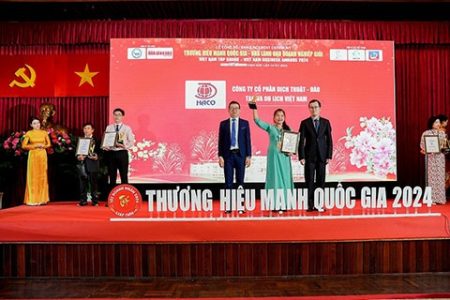"Bringing the World of Literature to You - English Book Translation"
Translate What is English Book?
The publishing industry places significant value on English book translation as it opens the doors for readers globally to read literature from various cultures and nations in their own language. Translating books from English to other languages is a challenging task that requires expertise in both the source and target languages, as well as a high degree of creativity to preserve the meaning and tone of the original text. This guide will examine the steps involved in English book translation, starting with the selection of a translator and ending with the final proofreading and editing phase.
Comparing the Different Approaches to Translating English Books into Other Languages
In the realm of English book translation, there are three main methods that can be employed. The most appropriate approach will depend on various factors, including the text's subject matter, the target audience, and the cultural context.
The first method is called "literal translation," which entails translating the text verbatim without any modifications to the meaning or structure of the original. This technique is often used for technical or scientific texts as it guarantees the preservation of the original meaning. However, it may result in stilted or awkward phrasing that is difficult to comprehend.
The second method is "free translation," where the translator conveys the meaning of the text in a more natural and fluid manner, taking into consideration the target audience and cultural context. This approach is often used for literary texts, as it enables the translator to exercise creative freedom and make the text more accessible to the reader. However, it may lead to the loss of some subtleties or meanings from the original text.
The third method is "adaptation," which involves modifying the text to better suit the target audience. This method is commonly used for children's books, as it allows the text to be simplified and made more appealing. However, it may result in a departure from the original author's intent and be considered disrespectful to the original text.
In conclusion, the choice of approach when translating English books into other languages will depend on various factors, including the subject matter, target audience, and cultural context. Each method has its own pros and cons, and it's crucial to choose the most appropriate method for each specific text.

Investigating the Role of Technology in English Book Translation
The role of technology in English book translation has become increasingly important in recent years. As the world becomes more interconnected, the need for accurate and timely translations of books from one language to another has grown exponentially. Technology has enabled translators to work faster and more accurately than ever before, making it possible to produce high-quality translations in a fraction of the time it would take to do so manually.
One of the most important advances in technology for book translation is machine translation (MT). MT is a form of computer-assisted translation that uses algorithms to automatically translate text from one language to another. This technology has revolutionized the translation industry, allowing for faster and more accurate translations than ever before. MT is especially useful for translating large volumes of text, such as books, as it can quickly and accurately translate large amounts of text in a fraction of the time it would take a human translator.
Another important technology for book translation is computer-aided translation (CAT). CAT is a form of computer-assisted translation that uses translation memory software to store and retrieve previously translated text. This technology allows translators to quickly access previously translated text, which can be used to speed up the translation process and ensure accuracy. CAT is especially useful for translating books that contain a lot of repeated text, as it can quickly and accurately translate large amounts of text in a fraction of the time it would take a human translator.
Finally, technology has also enabled the development of online translation services. These services allow users to quickly and easily translate text from one language to another. This technology has made it easier than ever before for people to access translations of books from around the world.
In conclusion, technology has revolutionized the translation industry, making it possible to produce high-quality translations in a fraction of the time it would take to do so manually. MT, CAT, and online translation services have all enabled translators to work faster and more accurately than ever before, making it easier than ever before to access translations of books from around the world.
See more : ONLINE TRANSLATION
Analyzing the Benefits of Translating English Books for Non-English Speakers
Translation of English books into other languages can provide a number of benefits for non-English speakers. By making books available in a language that is more accessible to readers, translation can open up a world of knowledge and entertainment to those who may not have had access to it before.
One of the primary benefits of translating English books for non-English speakers is that it can help to bridge the gap between cultures. By providing access to books in a language that is more familiar to readers, translation can help to foster understanding and appreciation of different cultures. This can be especially beneficial for those who are learning a new language, as it can provide them with a more comprehensive understanding of the culture and language they are studying.
Another benefit of translating English books for non-English speakers is that it can help to promote literacy. By making books available in a language that is more accessible to readers, translation can help to encourage more people to read. This can be especially beneficial in areas where literacy rates are low, as it can help to increase the number of people who are able to access books and other forms of literature.
Finally, translating English books for non-English speakers can also help to promote the spread of knowledge. By making books available in a language that is more accessible to readers, translation can help to ensure that knowledge is shared more widely. This can be especially beneficial for those who are researching a particular topic, as it can provide them with access to a wider range of sources.
Overall, translating English books for non-English speakers can provide a number of benefits. By making books available in a language that is more accessible to readers, translation can help to bridge the gap between cultures, promote literacy, and spread knowledge. As such, it can be an invaluable tool for those who are looking to learn more about different cultures and languages.
HACO TRANSLATION COMPANY – THE 1ST PRESTIGIOUS TRANSLATION SERVICE PROVIDER IN VIETNAM

COME WITH HACO TO FEEL THE DIFFERENCE AND COMPARE;
YOU WILL SEE THE BRAND WORTHY TO CHOOSE
20 years of accompanying enterprises
Examining the Impact of English Book Translations on Global Literacy
English book translations have had a significant impact on global literacy. By making books available in multiple languages, readers around the world have been able to access a wider range of literature and gain a better understanding of different cultures. This has had a positive effect on literacy rates, as more people are able to access books and gain knowledge.
English book translations have enabled readers to access books from different countries and cultures. This has allowed readers to gain a better understanding of different cultures and their literature. By being able to read books in their native language, readers are able to gain a deeper understanding of the culture and its literature. This has had a positive effect on global literacy, as readers are able to gain a better understanding of different cultures and their literature.
English book translations have also enabled readers to access books from different countries and cultures. This has allowed readers to gain a better understanding of different cultures and their literature. By being able to read books in their native language, readers are able to gain a deeper understanding of the culture and its literature. This has had a positive effect on global literacy, as readers are able to gain a better understanding of different cultures and their literature.
English book translations have also enabled readers to access books from different countries and cultures. This has allowed readers to gain a better understanding of different cultures and their literature. By being able to read books in their native language, readers are able to gain a deeper understanding of the culture and its literature. This has had a positive effect on global literacy, as readers are able to gain a better understanding of different cultures and their literature.
In conclusion, English book translations have had a significant impact on global literacy. By making books available in multiple languages, readers around the world have been able to access a wider range of literature and gain a better understanding of different cultures. This has had a positive effect on literacy rates, as more people are able to access books and gain knowledge. English book translations have enabled readers to gain a better understanding of different cultures and their literature, which has had a positive effect on global literacy.

Vice President Nguyen Thi Doan awarded medals to "Top 100 prestigious brand - brand enterprises" (At the Presidential Palace)
Exploring the Challenges of Translating English Books into Other Languages
The process of translating books from one language to another is a complex and challenging task. Translators must take into account the nuances of language, cultural context, and the author’s intent when translating a book. English is a particularly difficult language to translate due to its complexity and the wide range of dialects and accents used.
One of the main challenges of translating English books into other languages is the difficulty of accurately conveying the author’s intended meaning. English is a highly nuanced language, and the translator must be able to capture the subtlety of the author’s words and phrases. This can be especially difficult when translating idioms and colloquialisms, as these are often specific to a particular culture or region.
Another challenge is the difficulty of conveying the cultural context of the book. English books often contain references to cultural events, customs, and beliefs that may not be familiar to readers in other countries. Translators must be able to accurately convey the meaning of these references in order to ensure that the book is understood by readers in other countries.
Finally, the translator must be able to capture the author’s writing style and tone. English books often contain a variety of literary devices, such as metaphors, similes, and allusions, which must be accurately translated in order to preserve the author’s intent. Additionally, the translator must be able to capture the author’s tone and voice in order to ensure that the book is as true to the original as possible.
In conclusion, translating English books into other languages is a complex and challenging task. Translators must be able to accurately convey the author’s intended meaning, cultural context, and writing style in order to ensure that the book is understood by readers in other countries.












